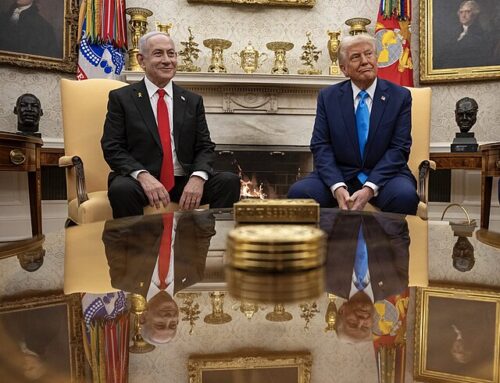Are we seeing a new Intifada in Israel? The word is bandied about a good deal and has already entered the language sufficiently so as to lose all precision. But the current situation in Israel does not resemble the first two Intifadas; both of those were genuine insurrections against the occupation involving mass participation on the West Bank. Both also involved leadership and organization and thus could be defeated by brute military force. Both were characterized by mass demonstrations, rock throwing, and terrorism, in some cases small arms and explosives. The current violence thus far is for the most part localized in Jerusalem, with spillover elsewhere in Israel within the green line, but the West Bank remains for the most part quiescent. The current violence is transparently disorganized and spontaneous, although clearly involves a good deal of contagion, the copycat phenomenon now being seen among American perpetrators of mass killings. It is wrought by the young, featuring 15-year olds and even younger, and there is some participation by young women as well as men. Its acts are for the most part stabbings, punctuated by drivers running people over or crashing their vehicles into property. The weapons are the daily artifacts of civilian life, automobiles, knives, or even screw drivers. Although the motivations of the stabbers must be interpreted as in some sense political, they articulate no particular demands, but rather express the raw elemental anger, indeed rage, of the oppressed and the hopeless, rage that appears to be the surface expression of deep-seated almost pathological hatred as well.
This is a sad commentary on contemporary life in Israel, for if there is to be an indefinite continuation into the future of the “one-state situation” that now prevails its experimental laboratory must be “unified” Jerusalem. There is only one genuine political authority in Israel between the Jordan River and the Mediterranean, only one real state. There are two semi-autonomous regions under Israeli hegemony, Gaza and the area under the nominal control of the Palestinian Authority. The PA is carrying out an organized international campaign to attain the trappings of statehood, and it now enjoys observer status at the United Nations and full recognition as a state by 139 of the world’s 195 or so nations, a comfortable majority. It also continues to suppress any manifestations of violence on the West Bank, despite Israeli charges of incitement against it. But full membership in the UN and the recognition of Europe and America still elude it and will continue to do so until it is able to enjoy full control over its territory and economic and diplomatic autonomy. It is not even allowed to aspire to an army.
But united Jerusalem as the capital of Israel is clearly is a failure, the myth of Jerusalem as a unified city even in the short run unsustainable. In 1967, when Israel “united” the city militarily, it also foolishly annexed to it a large area of the West Bank inhabited by in excess of 200,000 Arabs which today number more than 300,000. An offer of Israeli citizenship was then extended to the Arab population of the annexed areas but the vast majority refused, expecting the occupation not to last. Since then Jerusalem’s residents have been granted the right to live in Jerusalem but are otherwise stateless, with putative voting rights on the rest of the West Bank from which they are now separated by the famous barrier constructed to control terrorism. Ironically the Israelis are now building barriers to cordon them off from the rest of Jerusalem as well. Jerusalem’s Arabs are willy-nilly living or re-living phases of Jewish history: the stabbings recall the Zealots of ancient Judea who resorted to stabbings of Romans in a crude effort to throw off the Roman occupation during the first century of the modern era. Known as the Siccari, they were among the progenitors of what we now call terrorism. Meanwhile the Israelis enclose the modern Siccari in a new version of a ghetto.
The current wave of terror will most likely subside, although random individual acts may continue indefinitely. The authorities are without means to control them, precisely because they are disorganized and undirected. Defense Minister Ya’alon, in a response to a demand that he “clean up” East Jerusalem, responded that he could not confiscate all the kitchen knives to be found in the homes there. Israelis will feel less secure than they now do, but life will go on much as before. But the real Armageddon still may await Israel. The fear is not from Israel’s neighbors: Egypt, Jordan, even the Lebanese government, which would more openly befriend it if by some miracle the Palestinian problem were to be settled by the making of a Palestinian state. Rather the threat of is from non-state actors: Hezbollah, Hamas, and the occupied Palestinians in a genuine new intifada no longer restrained by the Palestinian Authority. A coordinated assault by all three might turn Israel into another version of Syria. Right now Hamas is seeking a truce as it nurses its wounds from the last war, and Hezbollah is engaged fighting for Assad in Syria. The Palestinian Authority prefers placidity on the West Bank while it pursues its international campaign. A window is still open: will this new wave of violence serve to show the right-wing government in power that their one-state dream is a chimera? Will they prevent the coming Armageddon, or civil war with a meaningful peace initiative? Don’t hold your breath.



Reaping the whirlwind.